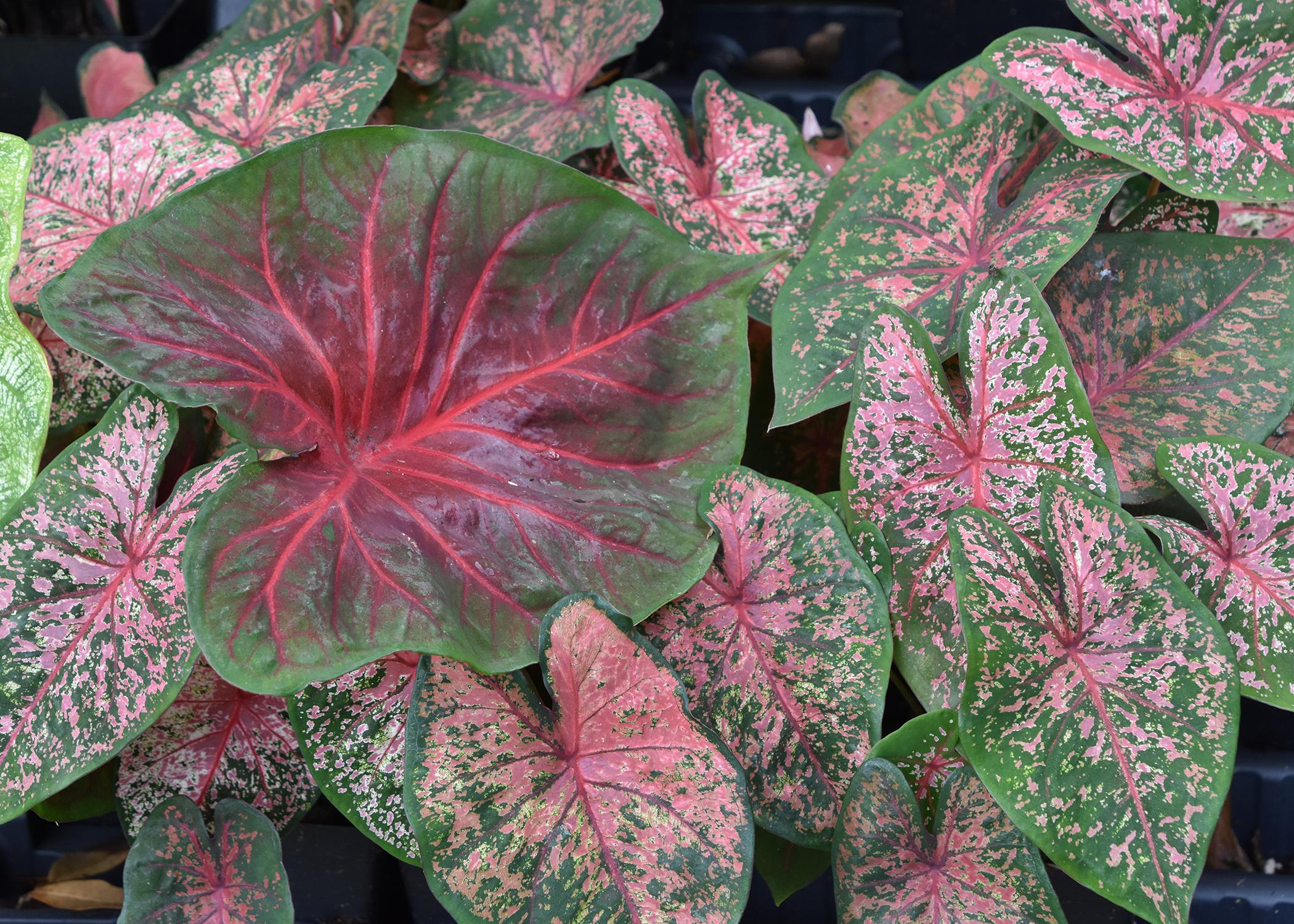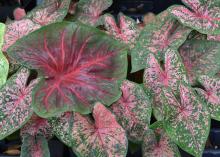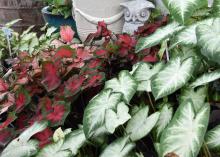Information Possibly Outdated
The information presented on this page was originally released on June 1, 2015. It may not be outdated, but please search our site for more current information. If you plan to quote or reference this information in a publication, please check with the Extension specialist or author before proceeding.
Plant caladiums for seasonal foliage color
With all of the annual flowering plants being displayed in garden centers, you might be distracted and pass right by the gorgeous foliage colors of caladium. And this makes the caladiums feel bad.
Caladiums are among the most misunderstood plants in landscapes and gardens. Do you plant them in the sun, shade or some kind of mixed sun and shade? The answer will be revealed later.
Though we may have questions about where to plant caladiums, most gardeners know they need this plant in the landscape. Who can argue against the plants’ colorful leaves? The foliage is distinctive and really shows off against a background of green foundation or screening shrubs. Foliage colors range from solid reds, greens and whites to very extravagant combinations that include spots, blotches and stripes.
Most garden centers stock these plants, which instantly add color to the landscape. Hard-core gardeners who enjoy perusing the catalogs during the winter months might do things differently, but buying caladiums already growing is so much easier than planting the tubers in the spring and waiting for the plants to emerge.
Caladiums are colorful additions to the landscape, even during the hottest periods of summer. Consistent moisture is the key during these hot months. Plant in fertile, well-drained soil. Mulch your caladium plants when they are transplanted to keep the soil moist and cool. Add 3 to 4 inches of good-quality mulch to improve even the most compacted clay soil.
If you’re like me and consider caladiums as annual color, you just leave the tubers in the ground at the end of the season. But frugal gardeners can actually dig the tubers at the end of the year, store them and replant the following year. Dig them up at the end of the season before the leaves have lost all color. Since these are tropical plants, soil temperature is important, so dig them before temperatures drop below 55 degrees.
Unless you want a colorful mixture in the garden, sort the plants and label them by color. Allow tubers to dry in a protected area for about a week; the garage or covered patio works fine for this. After a week, remove the dried foliage and carefully brush any remaining garden soil off the tubers. Store in a container with dry peat moss in a cool, dry location until the following spring.
When planting in the spring, wait until it’s time to transplant your tomatoes.
Now back to the question of where to plant caladiums in your landscape. The answer is actually pretty easy. Plant the caladiums wherever you want.
In my opinion, caladiums receiving at least partial shade tend to have better color development. But consider how and where caladiums are grown for the market. The vast majority of caladiums for our landscapes are field-grown in Florida in the full sun. In fact, 95 percent of all caladiums are grown in the Sunshine State.
With literally thousands of selections available in the market, it’s pretty much impossible to remember all the names. I think it doesn’t matter what you choose. Just pick your favorite color(s) and get them planted in your garden.









